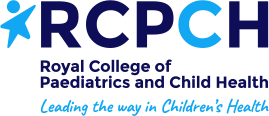High energy diet for babies
Click here to download a printable version of this page
All children need to eat a variety of foods to achieve a balanced diet that is essential for growth and good health. Some children who are not growing well or who have certain medical conditions may need extra calories and protein in their diet
General advice:
- Aim to give 3 meals and 2-3 small snack daily. Spread the meals and snacks evenly throughout the day.
- Avoid foods labelled as 'low fat' or 'diet'.
- Avoid offering drinks 1 hour before meals as they can reduce their appetite.
- Measure & record your child's weight regularly: once every 2 month is usually recommended.
- All babies under 1 should take an over the counter children's multivitamin supplements each day which includes vitamin D, unless they drink 500mls of infant formula.
The 5 Food Groups

Milk, cheese, yogurt
Give your child breast or formula milk until they are at least 1 year old.
Do
Use full fat dairy products or alternatives (the fat content should be at least 4grams / 100grams)
Best choices
- Cheddar / cream cheese
- Greek style yogurt, full fat yogurt or fromage frais or thick & creamy yogurts
Top tips
Add to sauces, omelettes, scrambles eggs, jacket potatoes, mashed potato, vegetables, baked beans etc.

Fats & Oils
Fats are the richest source of calories.
Do
Avoid low fat spread. Use an oil high in mono-unsaturated fats
Best choices
- Butter or margarine
- Olive, sunflower, rapeseed or corn oil
- Full fat mayonnaise
- Double or whipping cream
Top tips
- Spread generously and add to potatoes/ vegetables
- Fry or roast foods with added fat
- Drizzle foods with oil before serving
- Use cream for puddings, drinks, sauces and soups

Protein rich foods
Do
Aim for 2 portions daily
Best choices
- Meat and meat alternatives (quorn, soya mince etc.)
- Eggs, pulses (lentils, beans)
- Ground almonds, peanut butter
Top tips
- Add fat/cook in fat to boost their calorie value. Avoid removing the fat from meat, and avoid 'lean' meats
- Choose oily fish instead of white fish, fish tinned in oil rather than brine
- Add to cereals, yogurts & desserts

Starchy foods
Do
Include at least one portion at each meal
Best choices
- Cereals, breads, potatoes, pasta and rice
Top tips
- Add a generous serving of butter, cream, margarine or oil

Fruit & vegetables
These are low in calories but are an important source of vitamins and minerals
Do
Aim to give up to 5 small portions per day. One portion is about half an adult handful or a tablespoon
Best choices
- Avocados
- Dried fruit
- Smoothies and fruit juices
- Vegetables
Top tips
- Try mashed as a dip or in sandwiches
- Limit dried fruit/smoothies to one serving a day as they are high in sugar
- Serve with oil butter, margarine. cream or cheese to boost the calories
Sugary foods such as biscuits, cakes, sweets & chocolate, ice cream should be limited to after meals rather than snacks. Choose no added sugar drinks such as milk or water and avoid fizzy drinks.
Sugar is harmful to your child's teeth - aim to brush their teeth twice a day and visit the dentist regularly.
Between-meal snack ideas
Small energy dense snacks can be useful to boost nutritional intake but avoid within one hour of meals, as they may reduce their appetite:
- Banana, dried fruit (watch the size to avoid choking risk)
- Mashed avocado + mayonnaise, peanut butter or cream cheese on bread/toast (or bagel/crumpets)
- Cheese pieces




